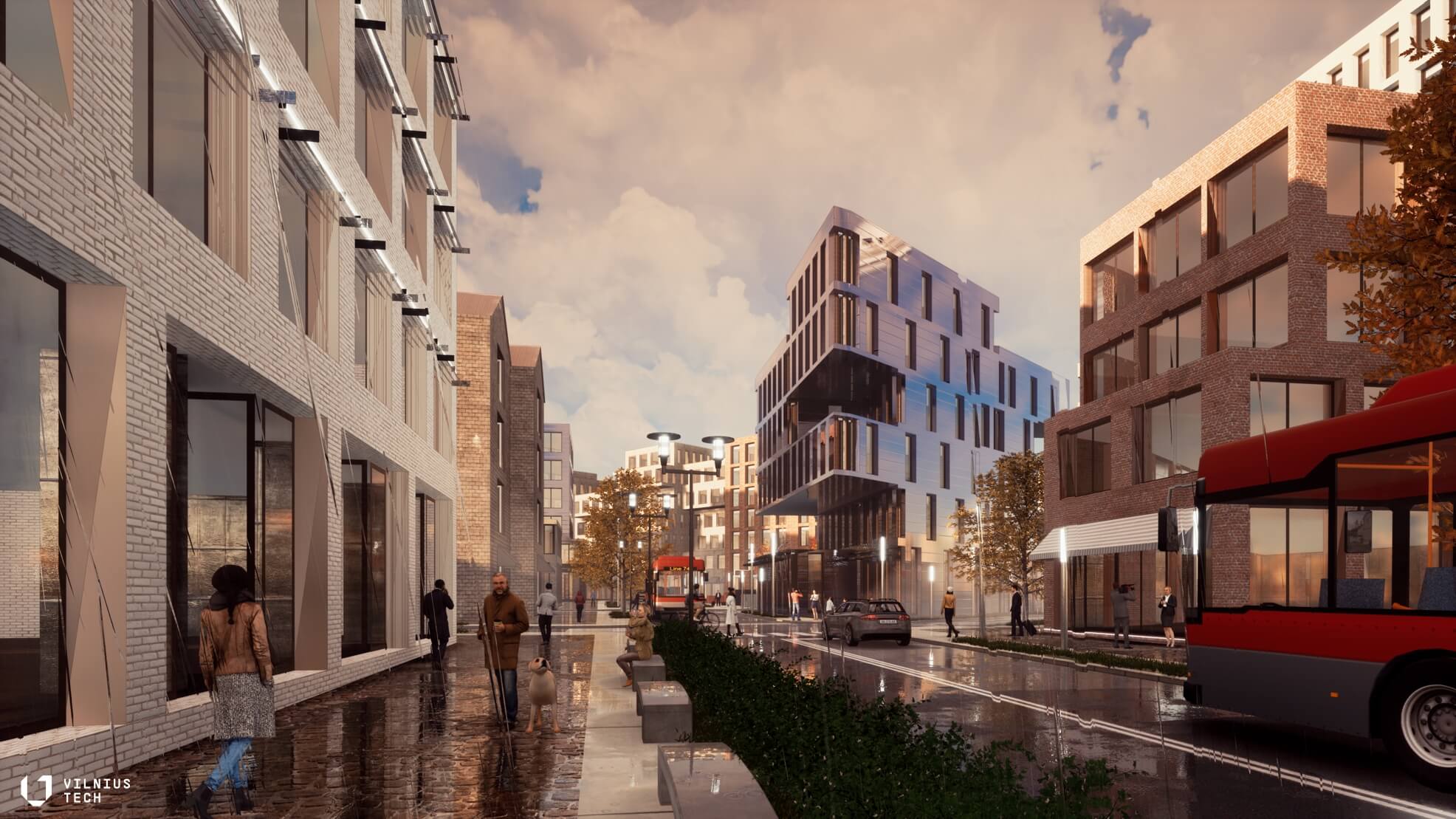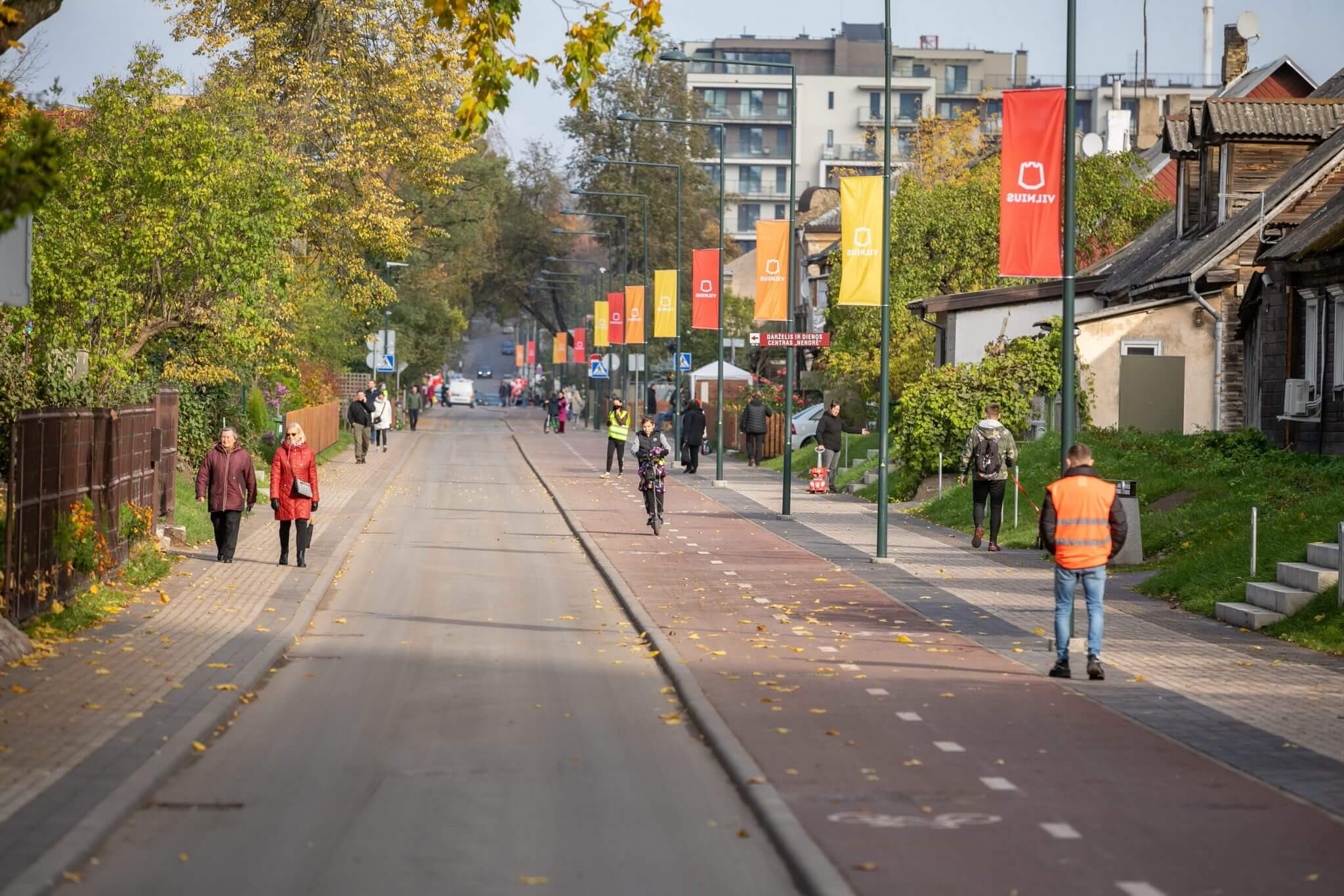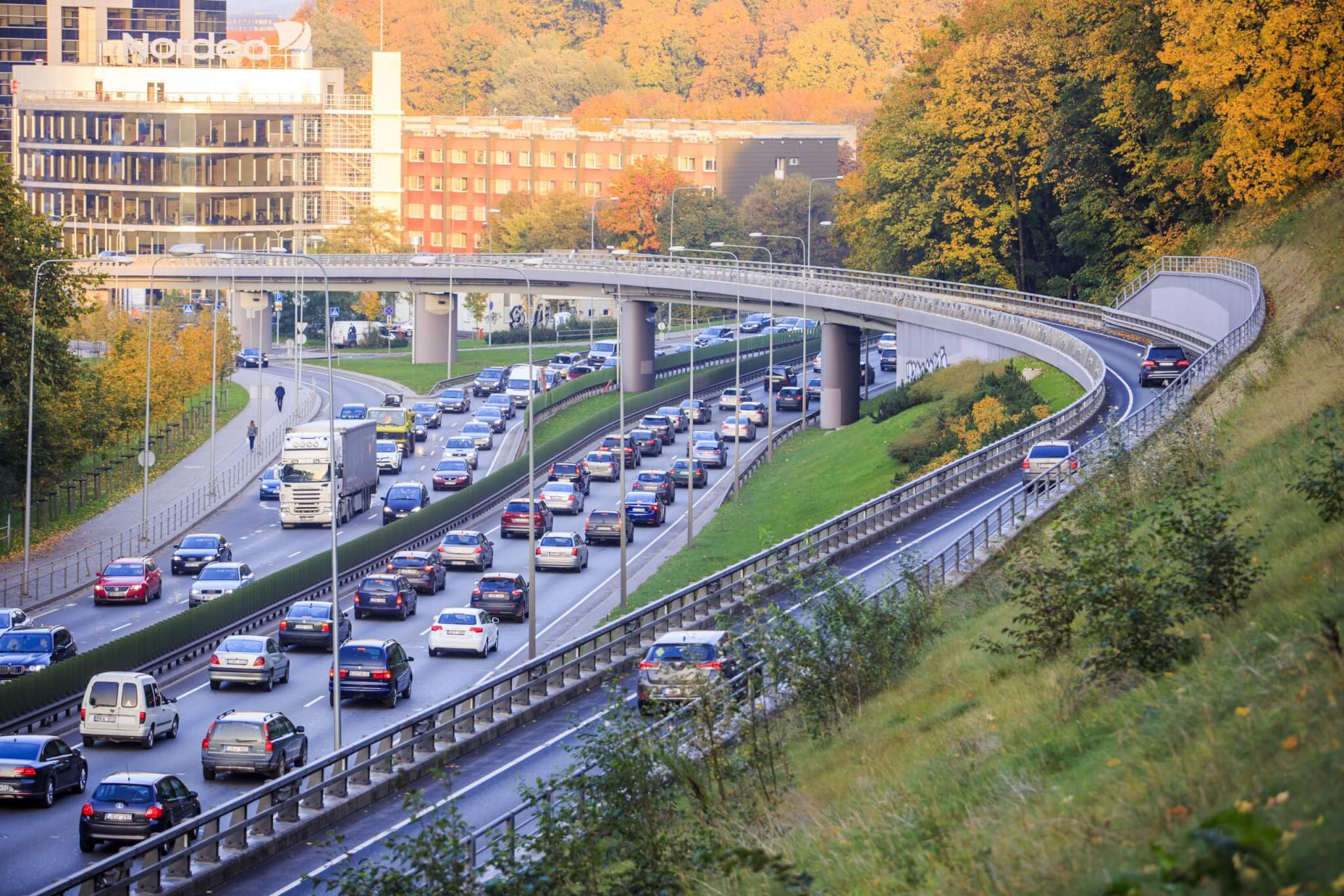Every year, the specialists of SĮ Vilniaus Plan contribute to the development of Vilnius City by working on spatial planning, public spaces and other important projects, and sharing their experience with other organisations. A recent example of successful cooperation is the urban development scenarios for the capital prepared by Vilnius Tech students. The “Architecture and Innovation” module, launched this year at Vilnius Tech’s Department of Urban Planning, has created the preconditions for a new perspective on the development priorities of Vilnius city. Architecture students explored the possibilities of housing development using data provided by the Vilnius Plan SE. The students were given the task of assessing the current situation of the city and the city’s master plan, which is currently being amended, and to present scenarios for the additional housing of up to 50 000 permanent residents in the Vilnius municipal area by 2050. “The growth of the capital’s population in recent years, changing lifestyle trends and the need to plan the city’s infrastructure in a targeted way encourage the search for ways to use the city’s territory more efficiently,” notes Milda Žekonytė, Head of the Design Department of the Vilnius Plan. The work of Vilnius Tech architecture students explored the possibilities of housing development by applying different solutions to the task and adapting them to the selected districts of the city: the Naujamiestis became a benchmark of comfortable living in the city centre, a new image was proposed for the rapidly modernising Šnipiškės, and solutions were sought to exploit the potential of Vilkpėdė. The attractive presentation of the research material and the opportunity to take a virtual walk and experience the possible changes in the urban environment help to better understand the current challenges of the development of Vilnius and the possibilities of their solution. The results of the students’ work can be accessed here: Naujamiestis (T)winningis, Naujosios Šnipiškės and Vilkpedės potential. “Such a complex task would be difficult to solve without the application of innovation at all stages of its execution: spatial analysis, modelling of urban proposals and presentation of results,” says the module’s curator, Dr Matas Cirtautas. It is expected that the multi-criteria analysis, parametric modelling and virtual reality representation of solutions used in the students’ work will be applied in the planning of many Lithuanian cities in the near future. The specialists of the Vilnius Plan SE see a great potential for the application of innovation. According to Mindaugas Grabauskas, Project Manager, the General Plan of Vilnius, currently under preparation, sets the long-term guidelines for the city’s development, but although specific environmental changes are difficult to predict, it is possible to model and visualise them. Using the latest technological solutions and tools, the impact of land-use regulations will be predicted in advance and adjusted to achieve a high quality urban environment.
Cooperation between Vilnius Plan and Vilnius Tech: innovations for the development of the capital
2020-11-03





